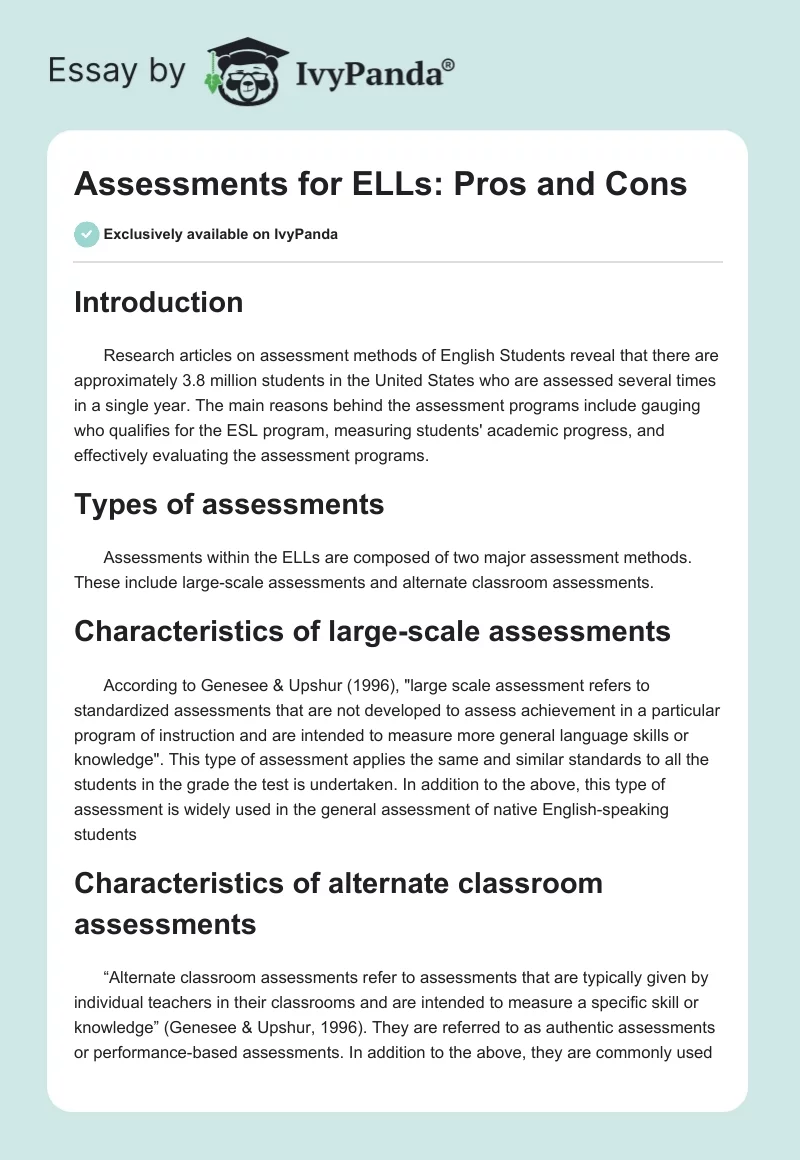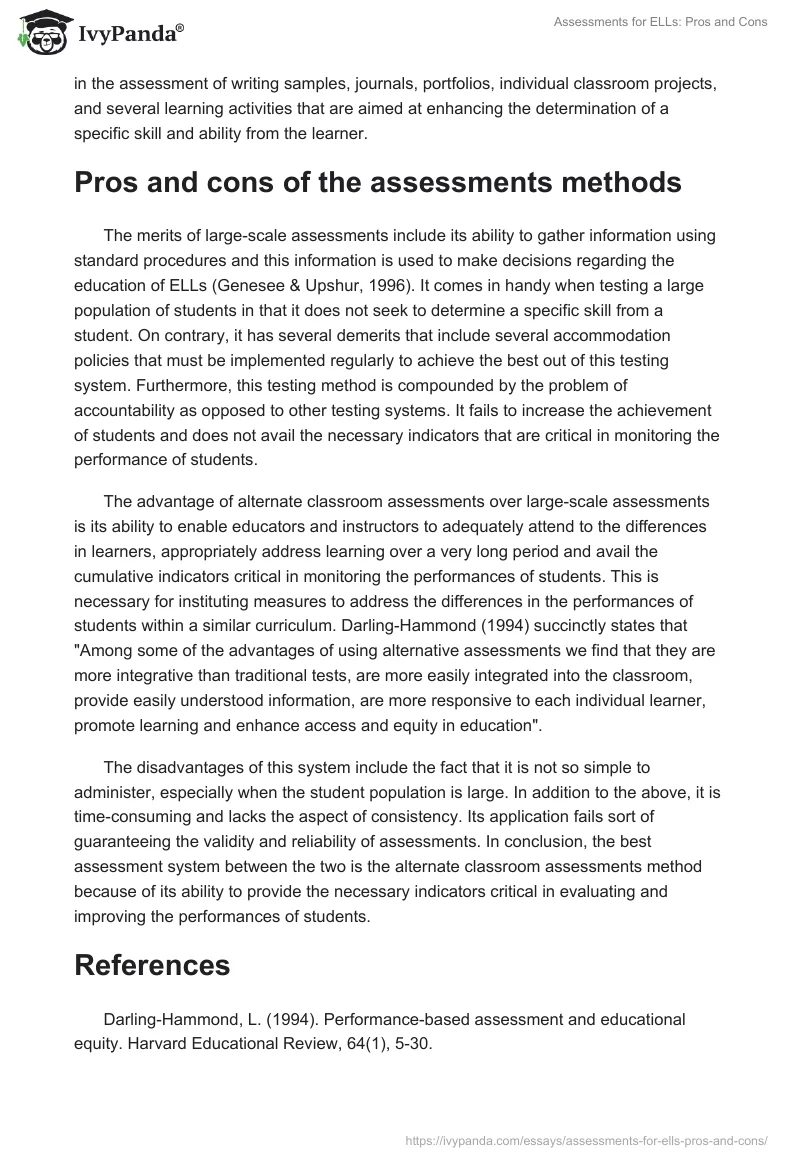Introduction
Research articles on assessment methods of English Students reveal that there are approximately 3.8 million students in the United States who are assessed several times in a single year. The main reasons behind the assessment programs include gauging who qualifies for the ESL program, measuring students’ academic progress, and effectively evaluating the assessment programs.
Types of assessments
Assessments within the ELLs are composed of two major assessment methods. These include large-scale assessments and alternate classroom assessments.
Characteristics of large-scale assessments
According to Genesee & Upshur (1996), “large scale assessment refers to standardized assessments that are not developed to assess achievement in a particular program of instruction and are intended to measure more general language skills or knowledge”. This type of assessment applies the same and similar standards to all the students in the grade the test is undertaken. In addition to the above, this type of assessment is widely used in the general assessment of native English-speaking students
Characteristics of alternate classroom assessments
“Alternate classroom assessments refer to assessments that are typically given by individual teachers in their classrooms and are intended to measure a specific skill or knowledge” (Genesee & Upshur, 1996). They are referred to as authentic assessments or performance-based assessments. In addition to the above, they are commonly used in the assessment of writing samples, journals, portfolios, individual classroom projects, and several learning activities that are aimed at enhancing the determination of a specific skill and ability from the learner.
Pros and cons of the assessments methods
The merits of large-scale assessments include its ability to gather information using standard procedures and this information is used to make decisions regarding the education of ELLs (Genesee & Upshur, 1996). It comes in handy when testing a large population of students in that it does not seek to determine a specific skill from a student. On contrary, it has several demerits that include several accommodation policies that must be implemented regularly to achieve the best out of this testing system. Furthermore, this testing method is compounded by the problem of accountability as opposed to other testing systems. It fails to increase the achievement of students and does not avail the necessary indicators that are critical in monitoring the performance of students.
The advantage of alternate classroom assessments over large-scale assessments is its ability to enable educators and instructors to adequately attend to the differences in learners, appropriately address learning over a very long period and avail the cumulative indicators critical in monitoring the performances of students. This is necessary for instituting measures to address the differences in the performances of students within a similar curriculum. Darling-Hammond (1994) succinctly states that “Among some of the advantages of using alternative assessments we find that they are more integrative than traditional tests, are more easily integrated into the classroom, provide easily understood information, are more responsive to each individual learner, promote learning and enhance access and equity in education”.
The disadvantages of this system include the fact that it is not so simple to administer, especially when the student population is large. In addition to the above, it is time-consuming and lacks the aspect of consistency. Its application fails sort of guaranteeing the validity and reliability of assessments. In conclusion, the best assessment system between the two is the alternate classroom assessments method because of its ability to provide the necessary indicators critical in evaluating and improving the performances of students.
References
Darling-Hammond, L. (1994). Performance-based assessment and educational equity. Harvard Educational Review, 64(1), 5-30.
Genesee, F. & Upshur, J.A. (1996). Classroom-based evaluation in second language education. Cambridge: Cambridge University Press.


